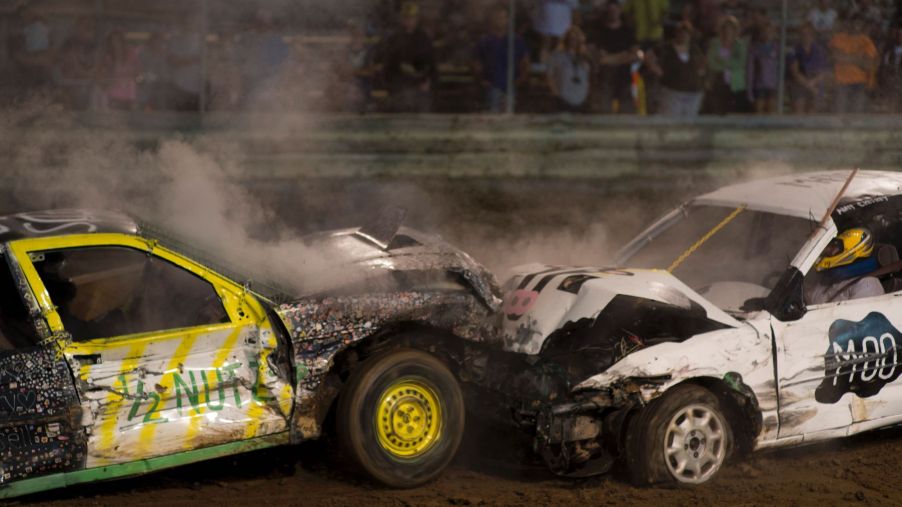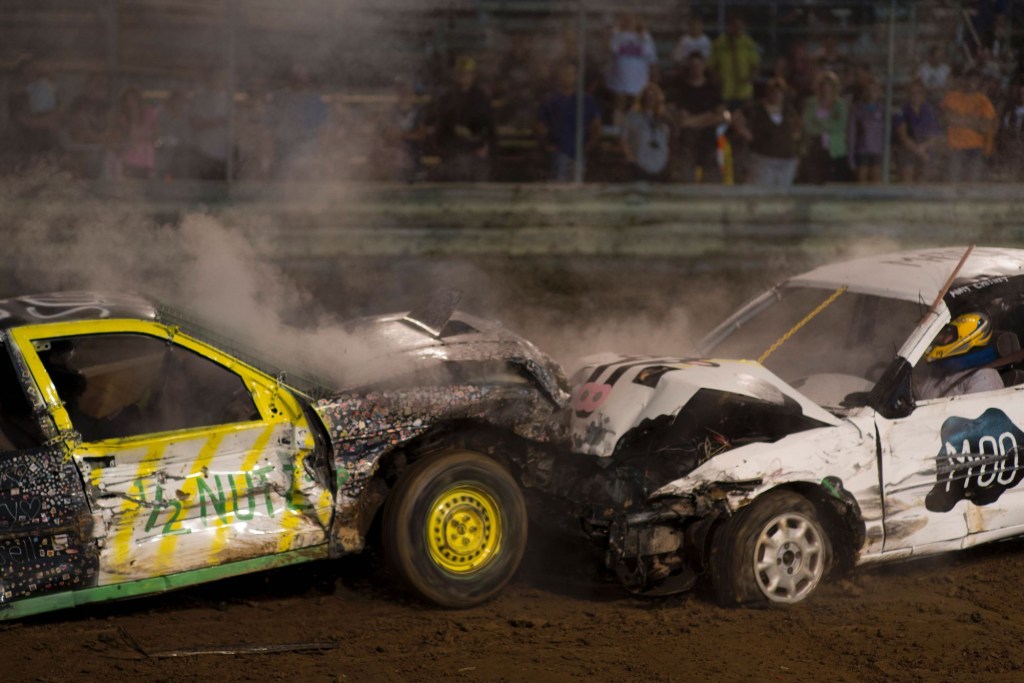
What Is the Best Car for Demolition Derby?
Every year, enthusiasts gather for the squealing cars, flying dirt, burning engines, and colossal crashes found only at the demolition derby. For fans, it’s almost a summer rite of passage. And for those who compete, demo derby night practically ranks up there with Christmas, full of excitement and anticipation.
In a demolition derby, cars speed frantically on a dirt course, aiming to slam into opponents as part of the sport. But some vehicles end up smashed worse than others. So, which cars are considered the best for demolition derby?
How did this violent sport start?

Believe it or not, the demolition derby phenomenon is celebrated worldwide, from small-town fairs to fan-packed stadiums. The historical beginnings of the sport date back to 1946 in Gardena, California, Napa explains. There, a group of “jalopies” took to Carroll Speedway and began crashing their cars into one another on purpose, marking it the first full-contact event. Since then, the sport has grown exponentially, with derbies in Australia, Canada, Italy, England, and other countries.
DD League suggests the sport really arrived when it appeared in the 1970s hit show Happy Days. The central plot of three full episodes involved a local demolition derby. It seems to have marked America’s embrace of the cultural phenomenon.
So, what is the best demolition derby car?
When it comes to evaluating which vehicles make the best demolition derby cars, a few models seem to work well for today’s contenders today. The Ford LTD and Crown Victoria are top rear-wheel-drive picks for their solid V8 engines and sturdy frames, Performance Plus Tire explains. The old-school Chevy Impalas tend to be popular, too, thanks to their size and weight.
But bigger isn’t always better. You might’ve noticed Ford Escorts racing around your local demolition derby track. These smaller cars are easy to find, cheap to modify, and still capable of taking a beating.
The GM W-Body cars, including the Regal, Grand Prix, and Lumina, also fall into this category. In addition, they offer plenty of V6 power and great reliability.
What car is banned from demolition derby?
In the early 1960s, the Chrysler Imperial was intended to compete with luxury competitors Lincoln and Cadillac, Auto Evolution reports. It was a beast of a car for its time. Making it even more attractive to buyers was the Imperial’s incredible durability. Chrysler made significant improvements to the frame’s strength, including increased rigidity, designed to protect occupants in a crash better.
For that reason alone, the 1964-1968 Imperial was banned from demolition derby contention in later years, Performance Plus Tire says. The car possesses an unfair advantage in crash competitions, withstanding hits far better than nearly any other car on the field. Add some custom upgrades to the already robust 6.9-liter V8, and the Chrysler Imperial was unstoppable in demo derbies.
Other common demolition derby rules mandate that all participating vehicles have working brakes and that glass components be removed, the Five Flags Derby rulebook states. All of the vehicle’s doors must be welded or chained closed, and the radiator must remain in its original stock location. Most demo derbies insist, too, that only cars can compete, meaning no trucks, limos, SUVs, or even hearses are allowed.
If you’re a demolition derby contender and your event regulations allow, find a Chrysler Imperial. Otherwise, some of the previously mentioned models make great crash-worthy demolition derby cars. And if you’re just a spectator, now you know why you see some of these cars more often at these competitions.


